Cyclamen forest: description and cultivation
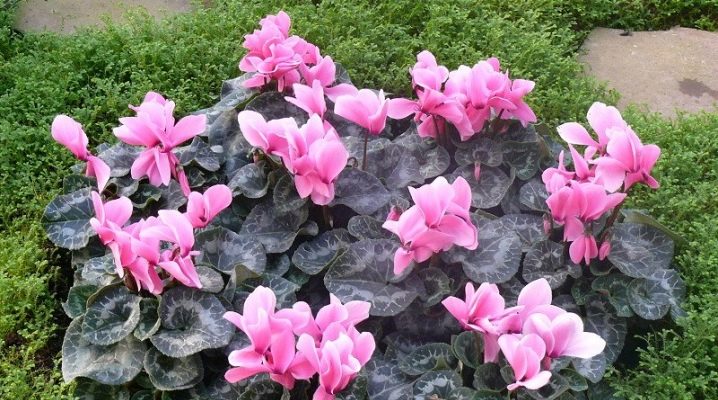
In the spring we are all waiting for the awakening of nature, when the snow begins to melt in the garden and the first blades of grass appear. And in the forest, this is the time for the appearance of the first flowers: snowdrops, Siberian spines and other beautiful messengers of spring. It was among them that a modest forest cyclamen hid, trying to escape.
This variety, unfortunately, has medicinal properties and is actively used in the manufacture of various drugs. And the beauty of flowers provoked their active cutting and sale in bouquets. The unique aroma has led to the fact that wild flowers began to be dug up and transplanted into their gardens and homes. The result was not long in coming - several types of cyclamen are already listed in the Red Book. So is it possible to grow this spring tenderness at home without destroying the flowers in nature - let's try to understand.

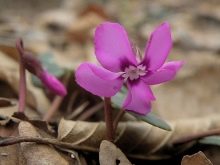
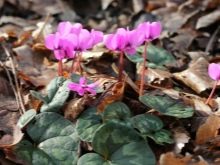
What does it look like?
Cyclamen forest is not the only species of wild plants of the genus Cyclamen. This herbaceous perennial differs from its relatives in smaller inflorescences. Rounded, dark green leaves on long petioles often have whitish, patterned streaks. The underside of the leaf is purple in color and the edges are wavy or jagged.
Long thin strings of peduncles hold the corolla, to which five bent-back petals of pink, pinkish-purple, purple, sometimes pale white are attached. The closer to the base of the petal, the richer the tone.... The primrose blooms from early spring to late autumn, emitting a delicate fragrant aroma with a honey hint. This smell is never found in indoor flowers.
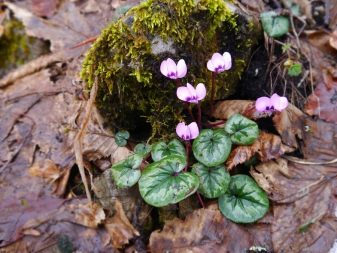
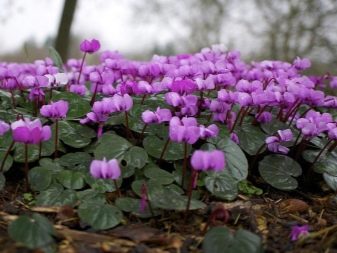
Where does it grow in nature?
Not all wild-growing cyclamens grow in the forest. For example, the largest wild representative, Cyclamen africanum, took a fancy to the rocky terrain, hiding in the bush. Its leathery leaves of bright green color are 10 cm wide and 15 cm long, but they appear when pinkish flowers bloom on a bare tuber.
Cyclamen ivy (Neapolitan) chose the habitat of the Mediterranean coast. This southern species is easily recognizable by its ivy-like grooved and denticulate leaves. By the fold of the petal, it is similar to the European species, but has “horns” at the base. In September and October, it pleases with lush pink flowers.
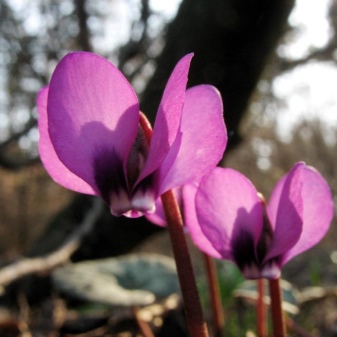

Many species feel comfortable both on rocky ledges and among mosses and lichens, in the shade of forest trees. Flowers are most difficult to survive on wooded slopes where landslides occur, as sometimes the tubers are too deep, making germination difficult.
An example of a species that came to a house from the forest is Colchis cyclamen: it grows on the limestone slopes of subalpine forests. No wonder the genus Cyclamen is called the Alpine violet. It is also found in the south of the western Caucasus. It blooms from August to October with pink flowers with dark spots at the limb. Has a very strong aroma similar to lily of the valley.
Thanks to the ants that carry the seeds, the threat of extinction of the species is not as great as that of the Kuznetsov (Caucasian) cyclamen. But these two species are listed in the Red Book of Russia and Ukraine.
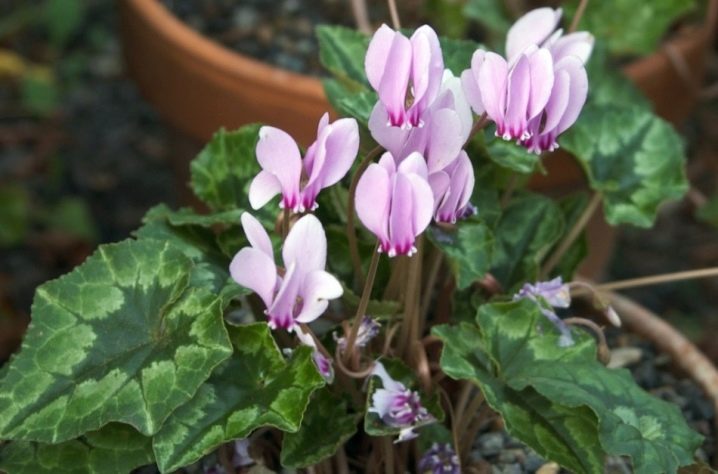
Cyclamen parviflorym (small-flowered) grows both in the rocks of Turkey and in the spruce forests of Russia. Twilight spruce crowns, fertile leafy land, high humidity - these are the natural habitats of this species. Frosted leaves have a diameter of 15-30 mm, and the petals are even smaller. Pale lilac, pinkish, deep pink petals have a burgundy spot at the base.
There are other types of forest cyclamens. They grow both in Central Europe and in Central Asia, the Mediterranean. The Caucasus and Crimea are the area of growth of certain species, but the progenitor of cyclamen appeared in Europe. Thanks to breeders, many cultivars and hybrids have been bred, which are grown in gardens and at home. But they do not have the same aroma that is inherent in the forest species.
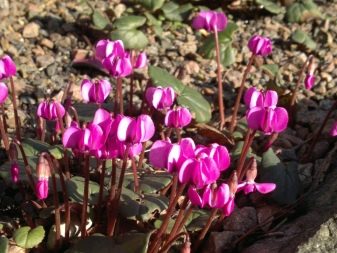

Growing conditions
It is because of the aroma and medicinal properties that they try to grow forest cyclamen in a garden or at home. There are several ways to purchase seed: buying seeds or tubers, but these will already be cultivars. If you are lucky and the garden plot is located next to the place where the flower grows, then perhaps over time it will move to your territory.
The fourth option is to go in search of a handsome man in the forest. Given that cyclamen loves to grow in the shade of trees and shrubs, on the slopes, then you need to look for them there.
But it is strictly forbidden to dig up these plants. It would be possible to turn out a couple of leaves, but in this way only the European species reproduces. The option of collecting seeds remains. How and when this can be done is described below.
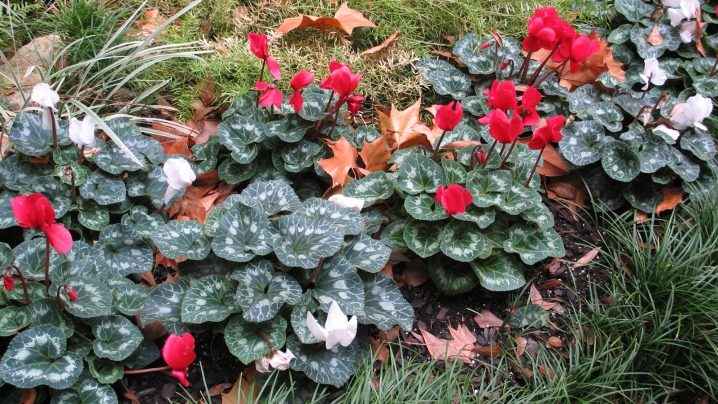
To make the plants comfortable in the garden, they are planted in the shade of trees and shrubs. In the fall, foliage will become a covering material. In order for the garden to delight with flowers from early spring to late autumn, you can plant several types of forest beauties: Caucasian, Colchis, Neapolitan. If the flower garden is far from the trees, then for the winter it is mulched with a 10-centimeter layer of fallen leaves.
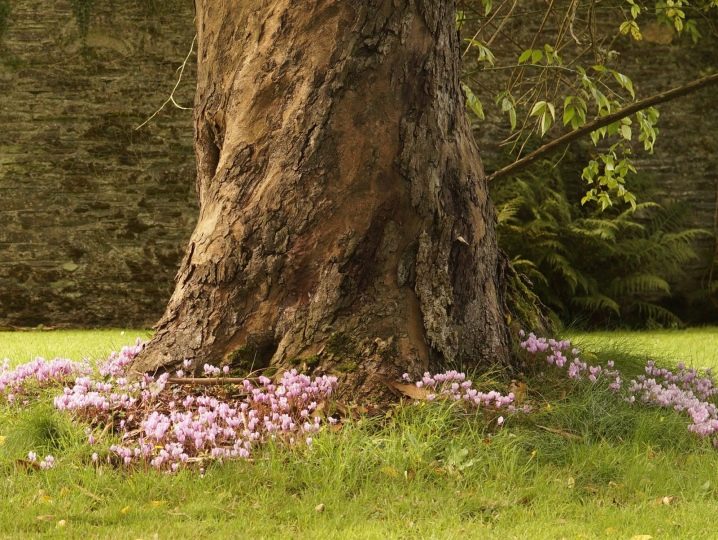
Landing
To plant cyclamen at home, you should know how to collect seeds. To collect, you need to wait until the long stalk bends in a spiral and begins to hide the fruit-box under the leaves, pressing it to the ground. At home, you need to extract the grains from it, selecting the largest ones.
Before planting, they are soaked for 15 hours in a manganese solution or for 12 hours in a growth enhancer such as "Epina" or "Zircon". During this time, it is necessary to prepare a container with a substrate for cyclamens. You can do it yourself, the main thing is that it is breathable. For this, coarse-fiber peat, leaf turf, humus, sand are used in equal proportions.
Grooves are made in the soil, moistened with a spray bottle, and seeds are scattered with an interval of 2-3 cm. Usually it is advised to cover the container with a film and put it in a cool, but bright place with a temperature not higher than 20 (or better 15) degrees.
But experienced florists recommend using a newspaper sheet instead of film. Moreover, it is also necessary to water through the newspaper, so the soil will retain moisture longer, and depressions and crusts will not form on the ground.

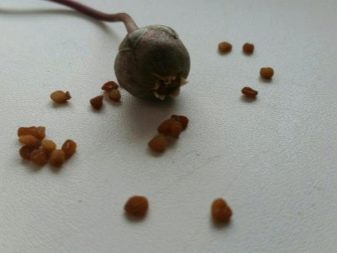
Seedlings will appear in a month, after which the film or newspaper is removed. The container is rearranged under bright diffused light, but without increasing the temperature. The plants dive after the appearance of the second pair of leaves. After 3 months, when the seedlings grow themselves small tubers and a few leaves, they are transplanted into permanent pots (if the plant grows in the house). For this, it is imperative to use drainage.
The tubers should be planted so that the top half is above the ground. A week after planting, the young are fed with ammonium sulfate (2 g per 1 l of water), and 10-14 days later - with potassium nitrate (1 g per 1 l of water). The first year, the seedlings will grow very slowly, as the tubers are growing. But on the second they can already bloom. By this time, the flower is transplanted again, deepening by 2/3.
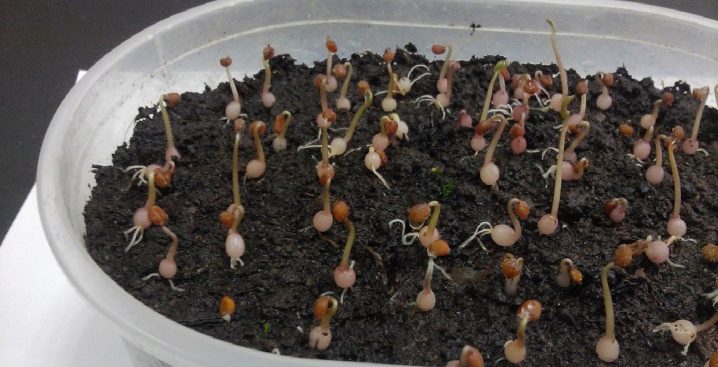
In the same way, young nodules are planted from an adult plant. But at the same time, the torn roots must be sprinkled with crushed coal. The transplant is carried out into new soil if the pot has become small.
Reproduction by dividing a tuber is a more complex process.

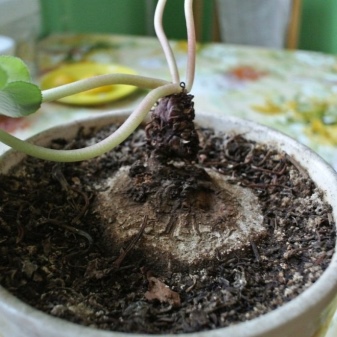
Care
15-18 months after sowing the seeds, the flower blooms vigorously. And after flowering, the leaves also wither, leaving a bare tuber.This is just a dormant period, not the death of the flower. At this time, watering is significantly reduced, only moistening the ground. And the plant does not like high temperature. Experienced growers reduce room temperature by adding snow and ice to the pan.
During the period of active growth, the plant requires regular watering through the pan and humidification of the air around the flower. Cyclamen does not need dampness in a pot: it is better to water less often, but more abundantly, without moisture getting on the leaves.

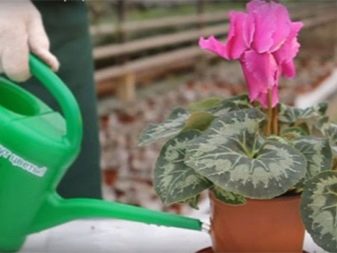
The rise in temperature is perceived by the flower as a time of rest. It is optimal to maintain a temperature of 10-19 degrees, especially during the flowering period. At the same time, the cyclamen loves good lighting - additional lighting will be required in winter. But it is important not to overheat the flower under the lamp.
Feed the plant every two weeks during the growing season, and never do so during the dormant period. Minimum nitrogen and more potassium and phosphorus. Since cyclamen naturally lives in deciduous soil, it will need organic fertilizers at home. That's why it is important to draw up a feeding schedule, alternating between its different types.
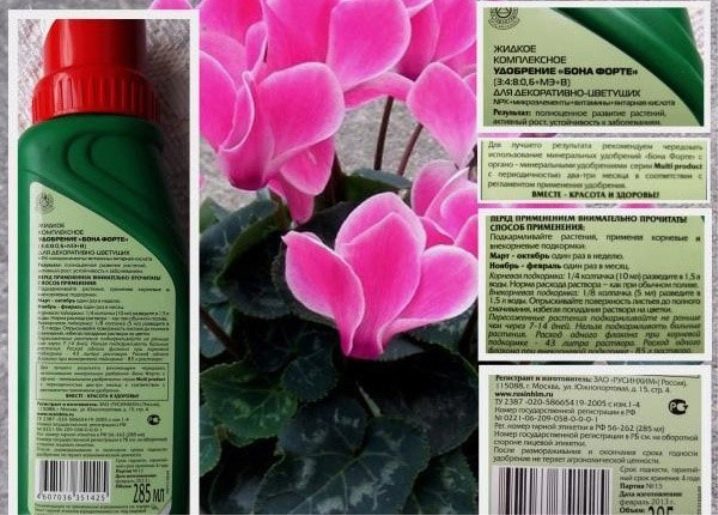
For the intricacies of growing cyclamen, see below.







































































































The comment was sent successfully.